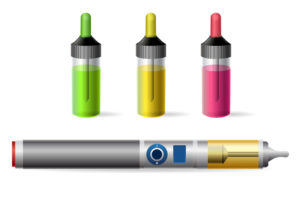Are your children vaping?
 When you sit down to talk with your children about smoking, internet safety, and sex, consider adding vaping to the list. There is so much information about vaping and e-cigarettes swirling around the internet that it’s difficult to separate marketing fiction from facts. Here, you’ll get to know the truth about vaping health risks.
When you sit down to talk with your children about smoking, internet safety, and sex, consider adding vaping to the list. There is so much information about vaping and e-cigarettes swirling around the internet that it’s difficult to separate marketing fiction from facts. Here, you’ll get to know the truth about vaping health risks.
What is vaping?
Vaping has become an epidemic among teenagers. This is seen by the number of teenagers who are vaping soaring.Vaping is the act of inhaling and exhaling vapor or aerosol created by a vaping device. The main components of a vaping device include a battery, a mouthpiece, a heating device, and a cartridge containing the e-juice or e-liquid. The e-liquid or e-juice is a combination of flavorings, nicotine, and other chemicals.
Types of vaping devices
- Vape pens: They resemble large fountain pens
- Advanced personal vaporizers: Also known as ‘mods’ and are customized by the user
- E-cigarettes: They resemble the traditional cigarettes
Why are teens appealed by vaping?
 It is a fact that vaping appeals teens, according to experts. Below are a few reasons why teens prefer vaping to smoking.
It is a fact that vaping appeals teens, according to experts. Below are a few reasons why teens prefer vaping to smoking.
- Flavoring and packaging: The vape cartridges are present in fruit, dessert, and fruit flavors. This is not available in cigarettes.
- Peer pressure: In social media, you’ll find many posts of teens vaping with hashtags such as #doitforjuul. For any teenager, who has not yet started vaping, will easily be influenced to vaping.
- Easier to hide: Most of the vaping devices are difficult for parents or guardians to detect. It, therefore, makes it easier for teenagers to hide.
Effect of vapor smoking on teenagers’ brain development
Vapor smoking contains nicotine. Nicotine has adverse effects on the brain. The effect is greatly seen in teenagers. It is because a teenager’s brain is not fully developed until they turn 25 years. The following are the effects of vapor smoking on brain development.
Addiction
A teenager’s brain takes note every time a new skill is learned. The brain taking note is a form of addiction. Addiction is a form of learning, which is common to teenagers. Therefore, teenagers become addicted more easily to nicotine from vapor smoking than adults.
Brain risks
A teenager’s brain is continuously developing. However, in addition to nicotine the development kind of halts. Nicotine messes up particular areas of the brain; therefore, affecting the teenager’s judgment, ability to meet a goal, and completing tasks. Other brain risks of vapor smoking to teenagers’ brain development include the development of mental problems like panic disorder, agoraphobia, antisocial personality disorder, and depression
Behavioral risks
 Additionally, nicotine makes teenagers more prone to uncontrolled immature behavior and emotional reactions. It’s beyond the usual teenage moodiness. Teenagers using the e-cigarettes or vaping are likely to use other tobacco products such as hookah and regular cigarettes cigars.
Additionally, nicotine makes teenagers more prone to uncontrolled immature behavior and emotional reactions. It’s beyond the usual teenage moodiness. Teenagers using the e-cigarettes or vaping are likely to use other tobacco products such as hookah and regular cigarettes cigars.
Several pieces of research also show that teenagers practicing vaping are likely to use alcohol and substances such as marijuana. These substances cause more adverse effects on teenagers’ health, social life, and well-being.
What roles can parents play about teen vaping?
Parents or guardians can help their kids to keep off from vaping. In particular, communication should be the first option for parents to help prevent their kids from vaping. Other steps parents can take include
- Watch out for warning signs such as bloodshot eyes, smoker’s cough, increased thirst, discarded components of a vaping device, and nosebleeds
- Ask open-ended questions when talking about vaping
- Tell them about the dangers of vaping
- Be a role model by quitting vaping if you are already doing it
- Reach out to professionals to help them break the habit
Final Takeaway
Vapor smoking affects teenagers’ brain development because of the presence of nicotine in the smoke. Teen vaping is common, and it threatens their physical and mental health. Furthermore, it leads to substance abuse and addiction. Therefore, healthcare providers, policymakers, and parents should take action and eradicate this harmful trend.


